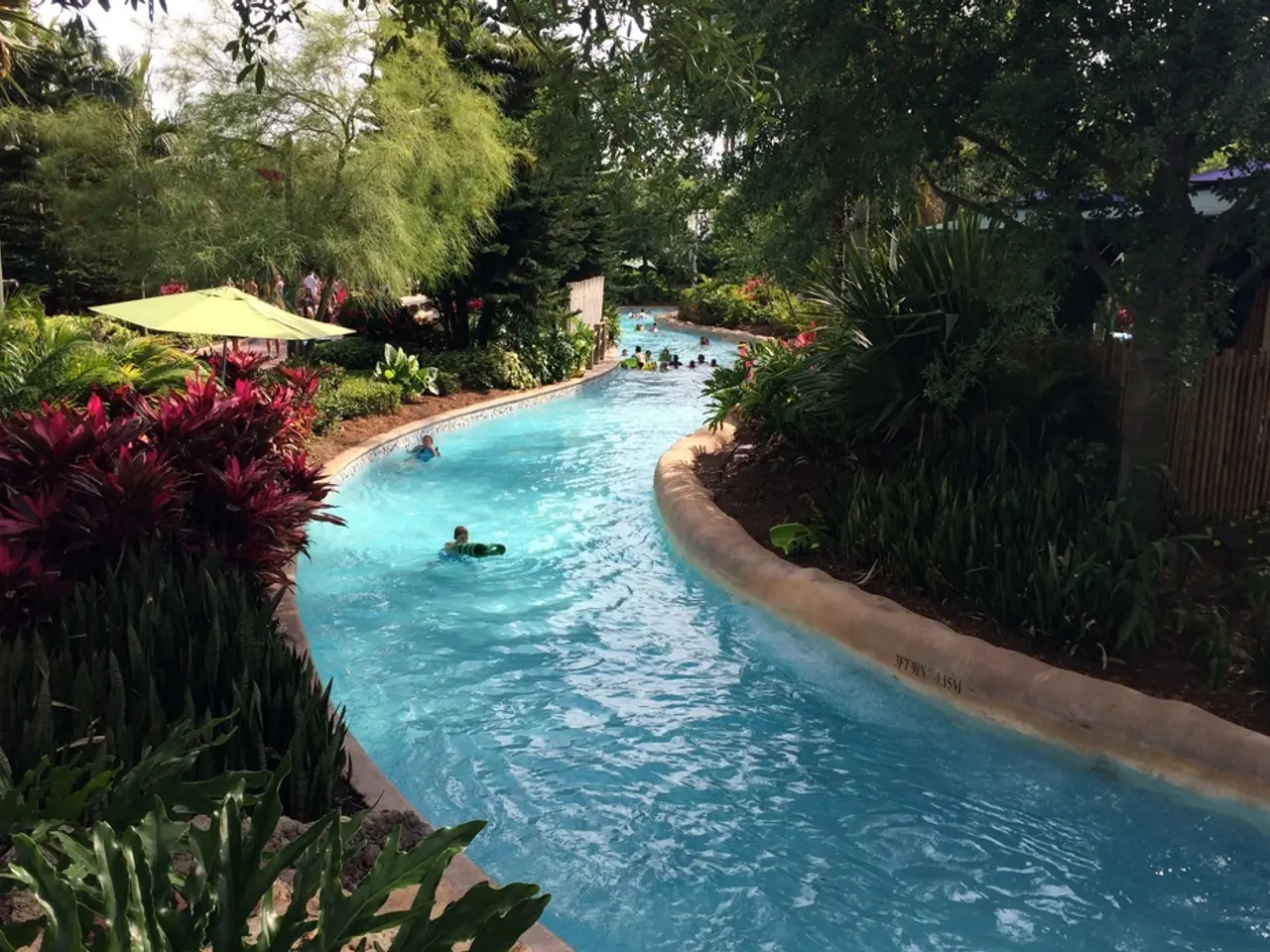Guide on Cleansing and Shocking a Green Swimming Pool
Green pool water can be a common problem, especially during warm, humid weather. This issue is primarily caused by algae growth, which thrives in stagnant water with low chlorine levels or poor chemical balance. Algae can quickly take hold if pool circulation is inadequate, filters are not working properly, or chlorine is depleted.
To prevent green pool water, maintaining proper chlorine levels and overall chemical balance, ensuring good water circulation, and keeping the pool clean and filtered regularly are key.
When the problem arises, here's a step-by-step guide to effectively treat green pool water:
- Test and Adjust Chemical Levels
Begin by testing the pool’s chemical levels, focusing on chlorine and pH. Adjust these levels to restore proper balance. If the pH is high, it may prevent chlorine from working effectively, so adjust it first.
- Shock the Pool
Shock the pool by adding a high dose of chlorine or a shock treatment product. Calcium hypochlorite (cal-hypo), known for its fast-acting and strong nature, is recommended for treating green pools. Non-chlorine shock is not effective in a serious green pool water crisis.
- Run the Pool Pump and Filter Continuously
Run the pool pump and filter continuously until the water clears, usually for at least 24-48 hours. During this time, it's important to run the pump 24/7 to keep the water moving and help the filter catch dying algae. The filter should be backwashed or cleaned daily during green pool cleaning, as green algae clogs up cartridges and sand quickly.
- Brush the Pool Surfaces
Brush the pool surfaces to remove algae clinging to walls and floors. A robotic pool cleaner can help speed up this process.
- Deal with Debris
Leaves and gunk floating around will eat up chlorine before it can do its job, so they should be vacuumed or skimmed out first.
- Automate Pool Care
Automating pool care, such as using a timer, setting reminders, or a smart monitor, can help prevent green pool surprises.
Following these steps will clear algae and restore clear, safe water. Regular maintenance and chemical monitoring will help prevent recurrence.
It's important to note that swimming in a green pool is not recommended, as it poses a hygiene risk due to the bacteria feeding off algae and a drowning hazard due to poor visibility.
References: [1] Pool Center. (n.d.). How to Treat a Green Pool. Retrieved from https://www.poolcenter.com/blog/how-to-treat-a-green-pool/ [2] Pool Corp. (n.d.). Green Algae. Retrieved from https://www.poolcorp.com/us/consumer/learn/water-care/treating-problems/green-algae [3] In The Swim. (n.d.). How to Get Rid of Green Algae in a Pool. Retrieved from https://www.intheswim.com/learn/pool-and-spa-care/how-to-get-rid-of-green-algae-in-a-pool/ [4] Pool and Spa. (n.d.). How to Treat a Green Pool. Retrieved from https://www.poolandspa.com/how-to-treat-a-green-pool/ [5] Pool School. (n.d.). How to Treat Green Algae in a Pool. Retrieved from https://www.poolschool.com/green-algae-pool/
Maintaining a proper chemical balance, regular cleaning, and automated pool care can help avoid a 'home-and-garden' issue like green pool water. Following a comprehensive guide to treat green pool water, which includes testing and adjusting chemical levels, shocking the pool, running the pump and filter continuously, brushing the pool surfaces, dealing with debris, and automating pool care, will help restore a 'lifestyle'-friendly clean pool.



